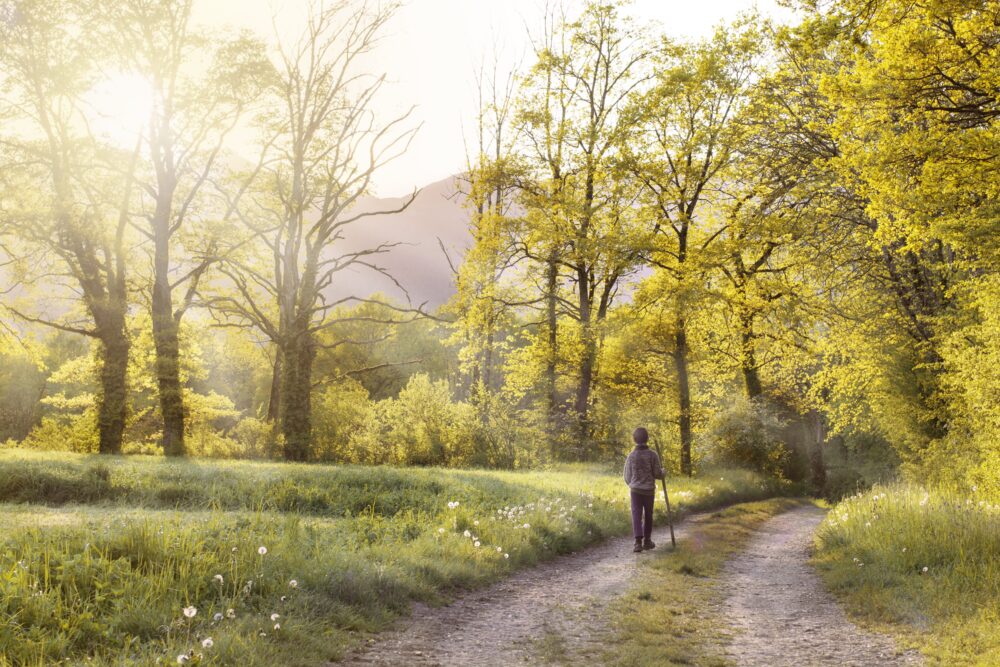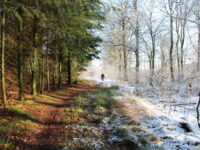“Go outside and take a breath of fresh air” is a phrase we have all heard before. When facing a mental block or feeling frustrated and stressed, stepping outside can be therapeutic and relaxing. In fact, nature can be so therapeutic that some psychiatric professionals have even begun prescribing nature breaks to their patients.
Mental health is a struggle that most people face. Around 1 in 5 US adults live with a mental illness, and 1 in 25 U.S. adults live with a serious mental illness like schizophrenia, bipolar disorder, or major depression. Whether it be long-lasting or temporary, we have all dealt with some form of mental health conflicts. There are many causes of mental illness, ranging from traumatic childhood experiences, to medical conditions, to substance use, and more. Despite its prevalence, it is essential to address the problem and to seek professional help when needed. Many patients are prescribed medications and therapy to address the illness; however, some psychiatrists are beginning to take a step back and slow down the aggressiveness in medical treatment, opting for a more organic and calming form of therapy: nature.
“Many are prescribed medications and different forms of therapy to address the problem head on, some psychiatrists are beginning to take a step back and slow down the aggressiveness in medical treatment, opting for a more natural and calming form of therapy: nature.”
Nature is essential to the livelihood of humans. In a study done at the University of Michigan, Dr. MaryCarol Hunter and her colleagues found that spending 20–30 minutes outside per hour led to a 21.3% decrease in salivary cortisol, a stress hormone secreted into saliva. Additionally, nature visits have been linked to better cognitive function and emotion regulation. Phytoncides, an insect-repelling chemical released by plants and inadvertently breathed in by humans, allow us to produce more natural killer cells, aiding in fighting cancer and viruses in our bodies.
“Phytoncides that are released by plants as a way of protection against insects allow us to increase production of natural killer cells, aiding in fighting cancer and disease in our body.”
There are many methods to incorporate nature into daily life, even when you live in the middle of a city. Taking an outdoor breather in the middle of the workday or moving your lunch break outside can help add nature and fresh air into your daily routine. After work, visiting arboretums or watching the sunset from the local park can be an effective de-stressor. On the weekends, joining a hiking club can be a method to unwind for those who desire companionship, motivation from others, and an extended time with nature. Regardless of how you incorporate nature into your daily life, even just a few changes can make a huge difference!
Changes on a personal level are certainly important, but governments can also help out by adding aspects of nature even in the most urban of areas. Planting trees along the road and integrating small parks are just a few of the many ideas that seem insignificant but can encourage interactions with nature. A study done by Alessandro Rigolon and his colleagues found that public green spaces are extremely beneficial to low-income areas. Often, areas of low-income lack green spaces for those people to interact with, inhibiting them from experiencing the essential physical and mental benefits that these spaces provide. Because of the lack of greenery in low-income areas, they commonly suffer from air pollution and heat-related health problems. Incorporating even just a few islands of nature can decrease the air pollution, improving the air quality, as well as provide areas of shade to lower heat issues and provide areas of relaxation. Incorporating even just a few small areas of greenery can be beneficial both physically and mentally.
Green spaces are essential to the health of all people. Whether you are feeling stressed, overwhelmed, or bored, taking a walk outside and visiting local parks can improve mental health by decreasing physiological stressors. These responsibilities do not have to rest on the shoulders of individuals, governments can also instill green areas locally to improve the wellbeing and the mental health of the public. By the efforts of both individuals and the government, programs can be enacted to increase easy access to green spaces. Efforts in doing so can not only strengthen the health and the wellbeing of individuals, but also encourage interactions and connections between people, helping to build a strong sense of community. So, next time you are feeling overwhelmed and stressed, it might be a good idea to take a break and take a walk outside!






